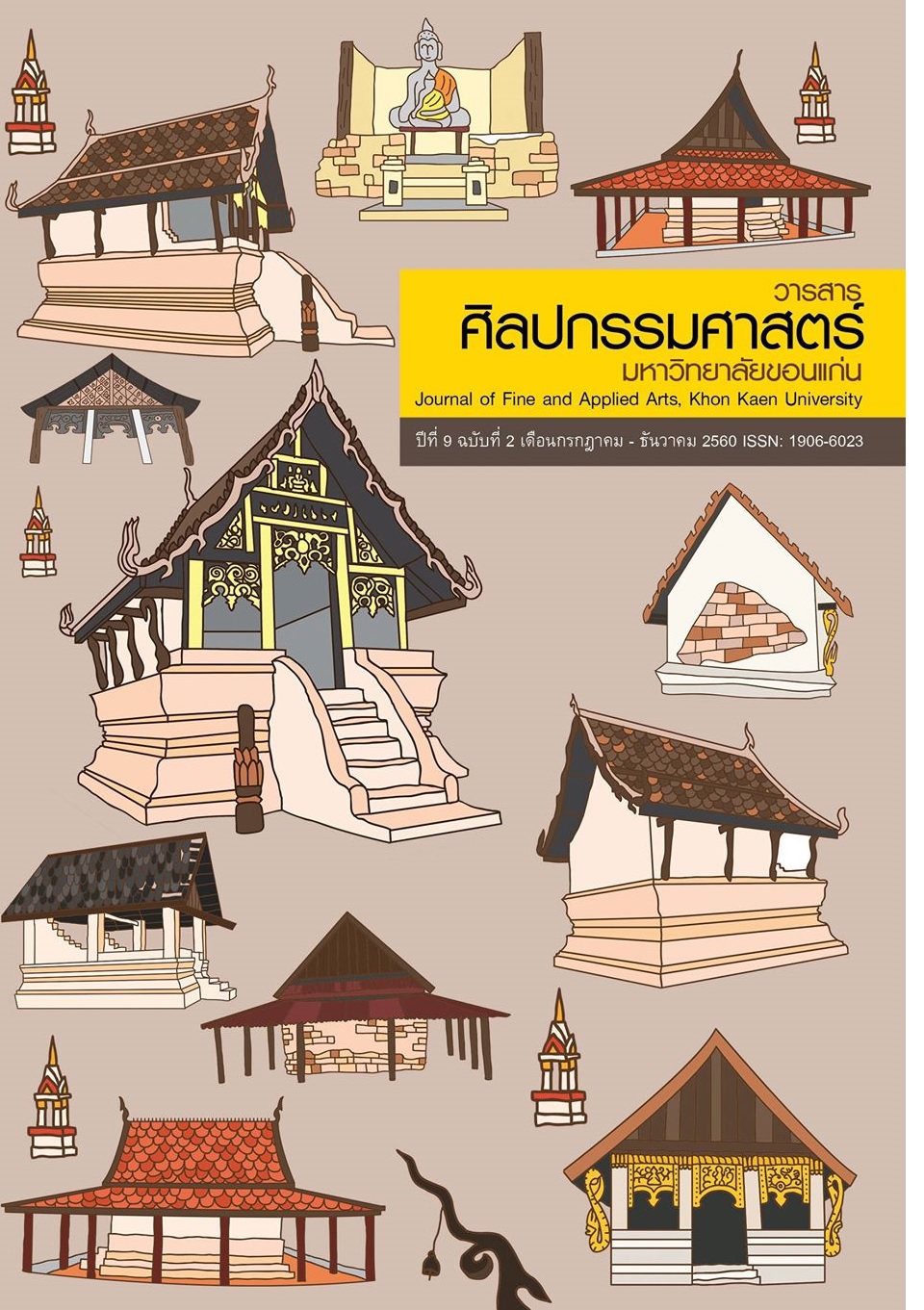เพลงตันหยงในวัฒนธรรมพื้นที่รอบอ่าวพังงา Phlang Tanjong in the cultural area around Phang’ nga bay
Main Article Content
Abstract
การวิจัยเรื่องเพลงตันหยงในวัฒนธรรมพื้นที่รอบอ่าวพังงามีวัตถุประสงค์เพื่อศึกษาประวัติและพัฒนาการ บทบาทหน้าที่และการปรับเปลี่ยน ตลอดจนลักษณะทางดนตรีของเพลงตันหยงในวัฒนธรรมพื้นที่รอบอ่าวพังงา พบว่าเพลงตันหยงเป็นรองเง็งท้องถิ่นชนิดหนึ่งที่มีรูปแบบการเล่นพื้นฐานมาจากรองเง็งชาวเล ดำรงอยู่ในชุมชนพื้นที่รอบอ่าวพังงาด้วยการปรับเปลี่ยนตามวัฒนธรรมพื้นที่ตอบรับกับบทบาทหน้าที่ต่อชุมชนในแต่ละช่วงเวลา มีลักษณะทางดนตรีที่แสดงออกผ่าน 2 องค์ประกอบสำคัญ ได้แก่ 1. เครื่องดนตรีและการประสมวง โดยใช้ซอ (ไวโอลิน) รำมะนา และฆ้อง เป็นเครื่องดนตรีหลัก 2. ลักษณะทำนองเพลง มีพื้นฐานจากบันไดเสียงไดอะโทนิค (Diatonic) และกลุ่มเสียงปัญจมูล (Pentatonic) ในจังหวะสองธรรมดา (Simple duple time) สร้างบทเพลงในสังคีตลักษณ์ 3 แบบ ได้แก่ บทเพลงท่อนเดียว (Strophic Form) 2 ท่อน (Binary Form) และแบบขยายทำนอง (Theme and Variation)
Research of Phlang tanjong in the cultural area around Phang’nga Bay used qualitative research. The purpose is to study the history and development, roles, and adaptation, including musical style, of Phlang tanjong in the cultural area around Phang’nga Bay with the following results: Phlang tanjong is a kind of local Ronggeng performance as based on the Ronggeng of Sea gypsies. The existence of Phlang tanjong in the area around Phang’nga Bay to remains by adapting themselves to culture which seems to change over time to respond to different roles in society. And it has presented a musical expression through 2 key elements: 1. mix of instruments and orchestra. An important instrument is the Saw (Violin), Rummana, and Gong. 2. Melody based on the diatonic and pentatonic scale on the stroke of simple duple time to make song in 3 types of song structure form which are strophic form, binary form, and theme and variation.
Article Details
Content and information in articles published in the Journal of Fine and Applied Arts of Khon Kaen University is regarded as the opinion and sole responsibility of the author(s) directly; therefore, editors are not obliged to agree to or share any responsibility with regard to the content and information that appears within these articles.
All articles, information, content, image, etc. that have been published in the Journal of Fine and Applied Arts of Khon Kaen University is the copyright of the Journal of Fine and Appllied Arts of Khon Kaen University. Any person or organization who wishes to distribute all or parts of the articles for further dissemination or other usage must first receive permission from the Journal of Fine and Applied Arts of Khon Kaen University before proceeding to do so.


